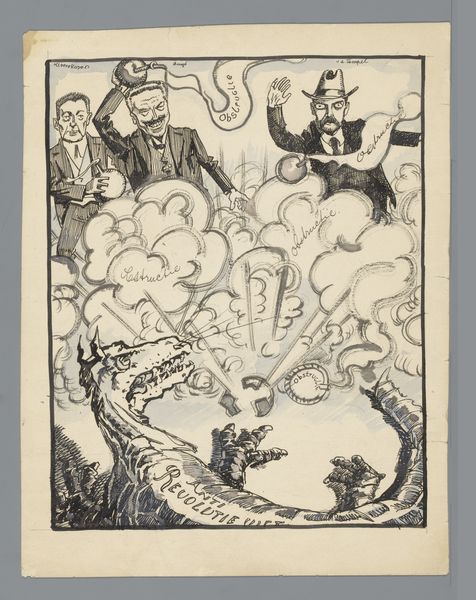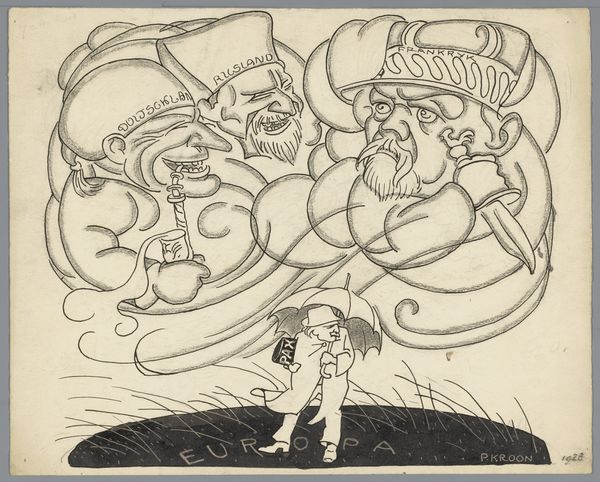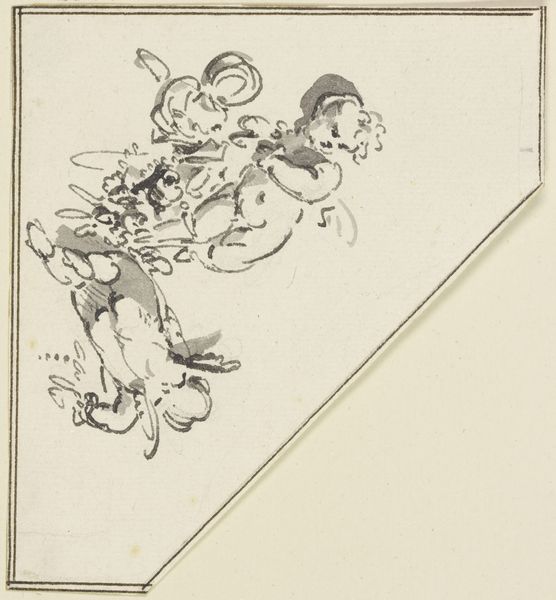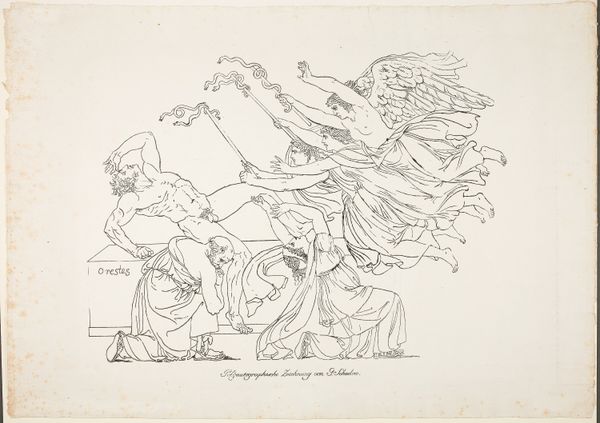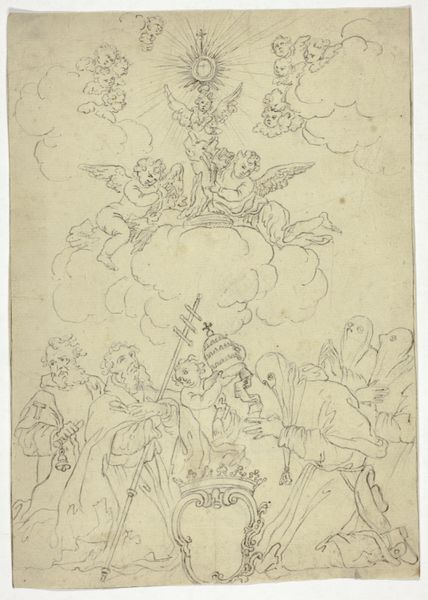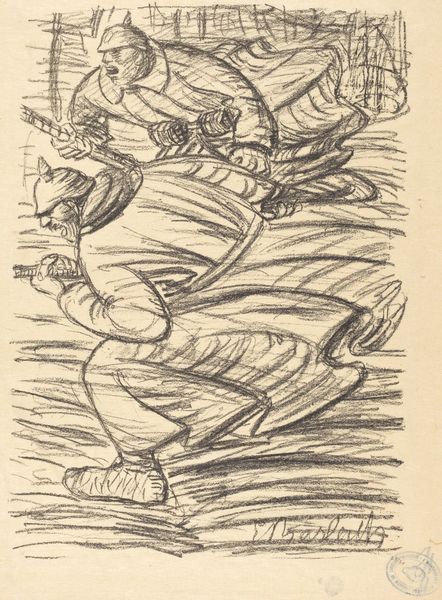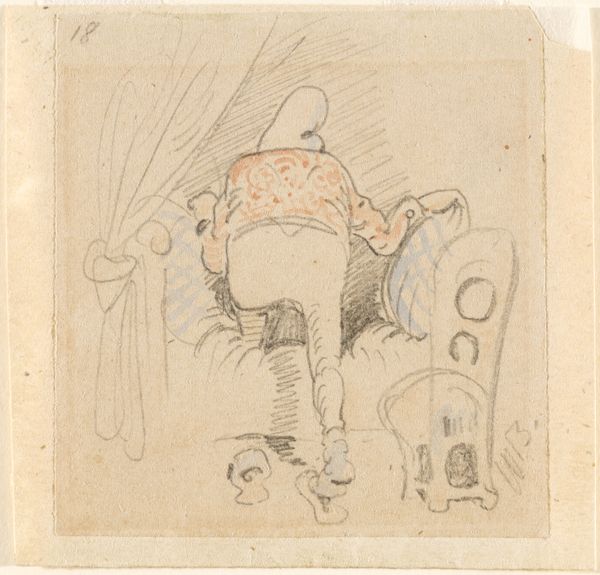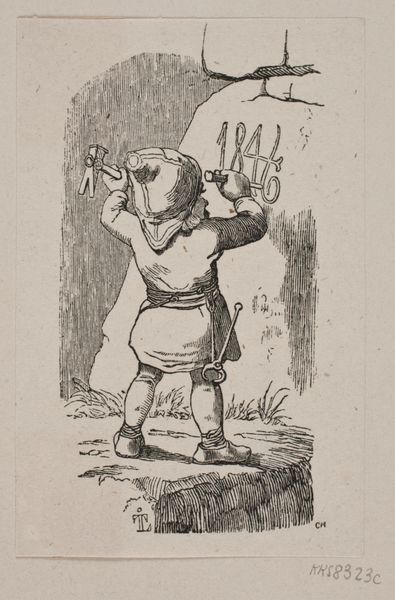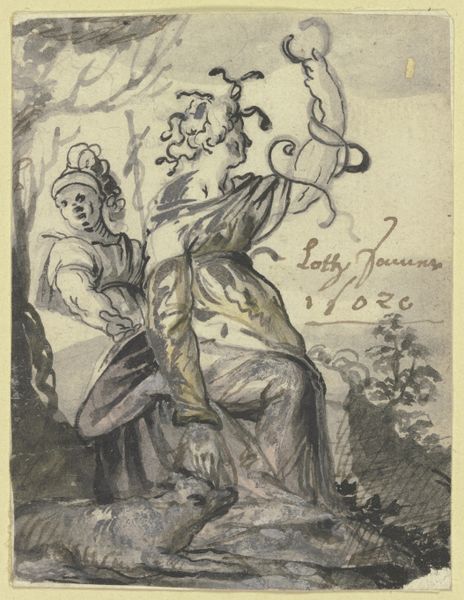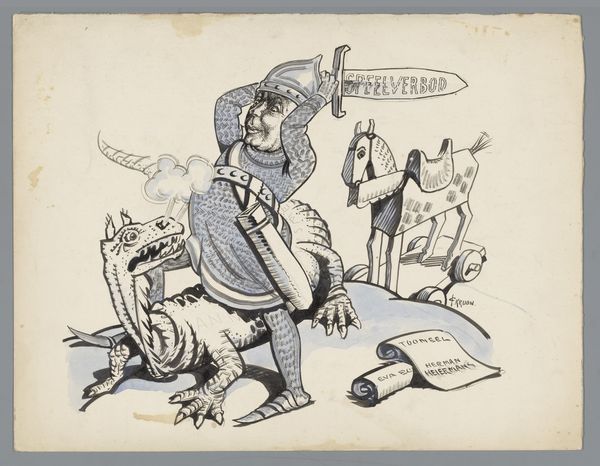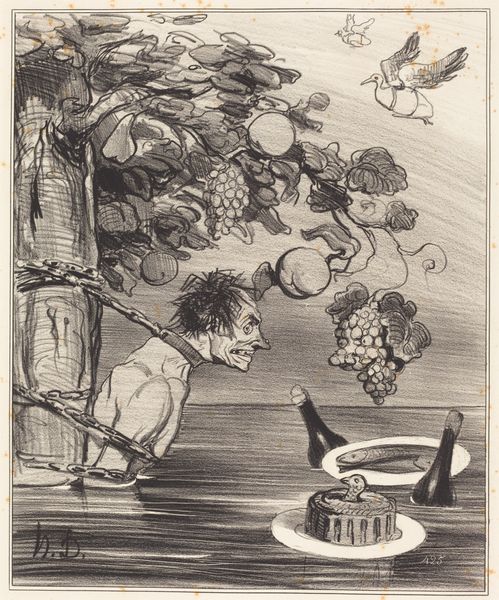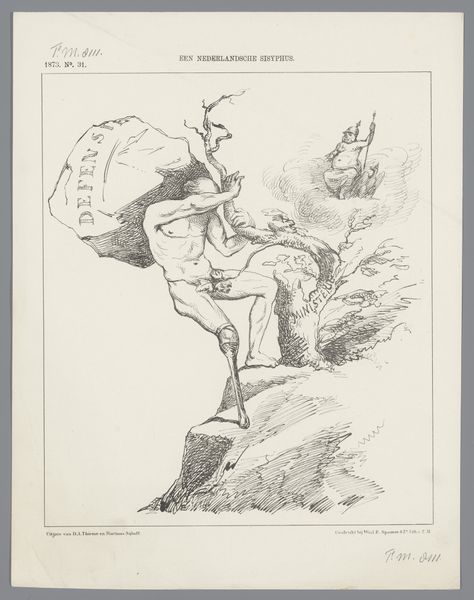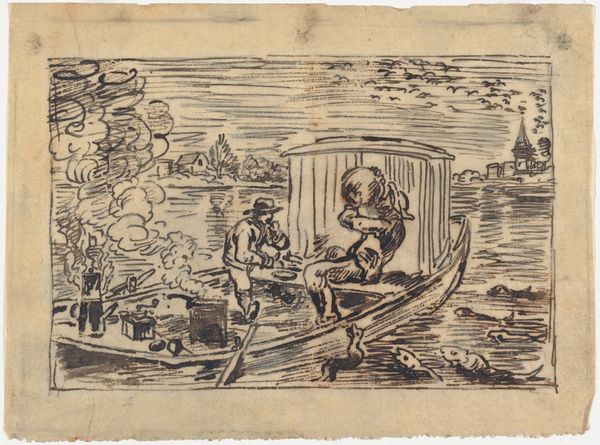
drawing, ink
#
drawing
#
narrative-art
#
caricature
#
ink
#
modernism
Dimensions: height 251 mm, width 236 mm
Copyright: Rijks Museum: Open Domain
Curator: So, this lively drawing, rendered in ink, goes by the name "Turkije verjaagt Griekenland," or "Turkey repels Greece." Its creator, Patricq Kroon, captured this scene sometime between 1919 and 1922. Editor: It hits you immediately with that almost frenetic energy, doesn’t it? Like a political cartoon set loose with a quill and a dare. There's so much cross-hatching and swirling lines that it feels almost dizzying. The characters have this wonderful caricatured quality; the whole piece evokes chaos and a dark sort of humor. Curator: Absolutely, the artist's mark is undeniably present here. Beyond its aesthetic qualities, though, this piece delves into themes of nationalism and political struggle. Given the timeframe, it directly reflects the Greco-Turkish War, casting Turkey in the role of the triumphant expeller. The caricature would have amplified sentiments that were already present. Editor: Right, and it’s so interesting how the 'high' subject matter of war is presented via this very approachable medium of ink drawing. This challenges these hierarchies we often place on different forms of art. The use of relatively inexpensive and easily accessible materials also makes you wonder about the intended audience and the message’s reach. It almost suggests it would be disseminated among everyday people as part of popular print culture. Curator: Indeed. Looking at the helmet worn by one of the characters, the inclusion of specific details like that hints at the deeper symbolic layer embedded in the scene. Kroon, through his art, captured not just the conflict but also the broader, emotionally charged narrative of the time. And if you look closely, you will see in the caption “De Turk!... Dre helm van Mars zal Constant justje te waat worden!", it means literally 'The Turk!... That helmet of Mars will be blackened Constantinople!’". Editor: It feels like a raw expression of opinion using materials at hand, something that’s both accessible and visually striking. We must think about how labor-intensive print-making was back then. It really emphasizes this incredible investment to make visible a viewpoint and affect an audience’s political perceptions through something that’s immediately arresting to look at. Curator: It speaks to the potent intersection of art, material culture, and sociopolitical narrative—creating a powerful commentary. Editor: A stark reminder of how artistic choices intertwine with tangible material conditions to shape our perception of conflicts and even of our own beliefs.
Comments
No comments
Be the first to comment and join the conversation on the ultimate creative platform.

